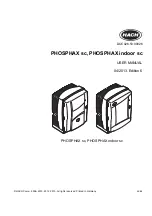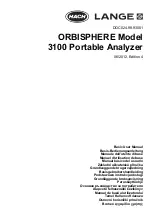
Instructions for using an MC-202 fitted with the Kenton 5 Socket Kit
Setting up:
The MC-202 is supplied with CV & Gate inputs fitted as standard, however these are not satisfactory for use with a
CV converter in the vast majority of cases. They connect through the internal sequencer, which slows down the
response time, limits the note range and quantises the notes into discrete steps which negates the effect of
pitchbend, modulation and portamento applied via the CV input. The added Kenton sockets do not suffer from
these restrictions.
The five added Kenton sockets are 3.5mm mono jack sockets (mini jacks). In order to connect to a Kenton
converter, you will need up to five mini jack to mini jack leads.
You will need a MIDI to CV converter set up in the following way:
CV output should be Volts/Octave mode
Gate should be v-trig (standard gate)
– where zero volts = note off and +5 volts = note on
Auxiliary 1 output should have a range of 0 to +5 volts from min to max (for filter)
Auxiliary 2 output should have a range of 0 to +5 volts from min to max (for portamento)
– ideally controller #65
Auxiliary 3 output should have a range of 0 to +5 volts from min to max (for accent)
Playing the sounds:
You need both CV & Gate signals to control an analogue synthesiser. The CV signal tells it what note to
play (CV means control voltage). The Gate signal tells it when to play the note.
Connect the CV In of the MC-202 to the CV Out of your CV converter.
Connect the Gate In of the MC-202 to the Gate Out of your CV converter.
Do not connect the other inputs for now. Get the notes playing first.
Provided you have connected the cables correctly, and your MIDI to CV converter is set up properly, the MC-202
will now play from your MIDI keyboard.
Note that the MC-202 will not play notes below about MIDI note #36 or above about MIDI note #96
– this is due to
the design of the MC-202.
Filter:
Once you have got the notes playing correctly, connect the filter jack to an auxiliary output. This should be an
output which gives a variable output between 0 and 5 volts
– usually controlled by a MIDI continuous controller
such as one of the standard MIDI controllers #0
– #119 or aftertouch or velocity. Kenton converters usually have
the auxiliaries assigned to controller #16 by default. As the voltage is changed from 0 to +5 volts, the filter cutoff
frequency will get higher, allowing more high frequency components of the signal through.
Note
. The filter input is a voltage input. It is not an
audio
input to the filter section.
For the Pro-Solo set Aux min to 0 and aux max to 50. For the Pro-2000 set aux min to 0 and aux max to +25
Portamento:
When the filter is working OK, connect the portamento jack to the second auxiliary output.
Portamento is either on or off, apply either the on voltage (+5V) or the off voltage (0V).
For the Pro-Solo set aux min to 0 and aux max to 50. For the Pro-2000 set aux min to 0 and aux max to +25
Accent:
When the portamento is working OK, connect the accent jack to the third auxiliary output.
Accent is either on or off, apply either the on voltage (+5V) or the off voltage (0V).
Note
: The accent will only have an effect if the MC-202
’s VCA is set to be controlled by the envelope (not Gate).
For the Pro-Solo set aux min to 0 and aux max to 50. For the Pro-2000 set aux min to 0 and aux max to +25




















